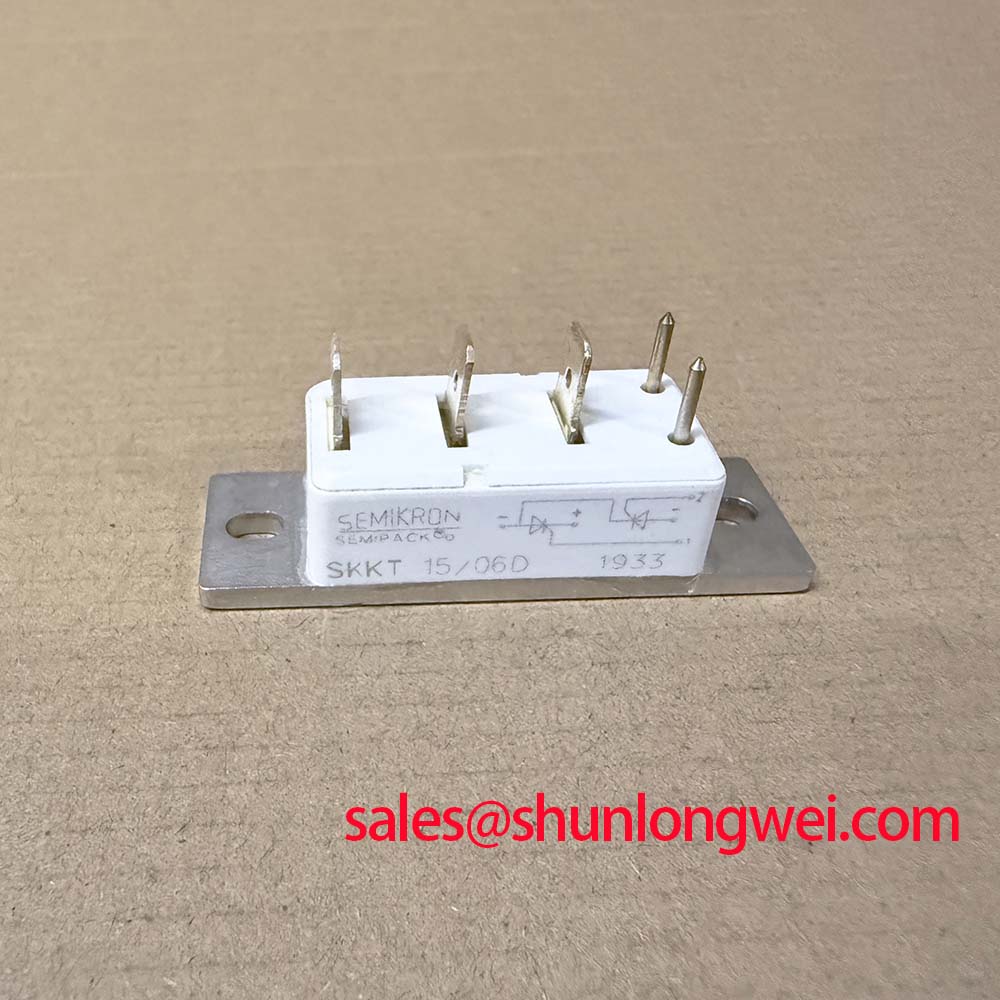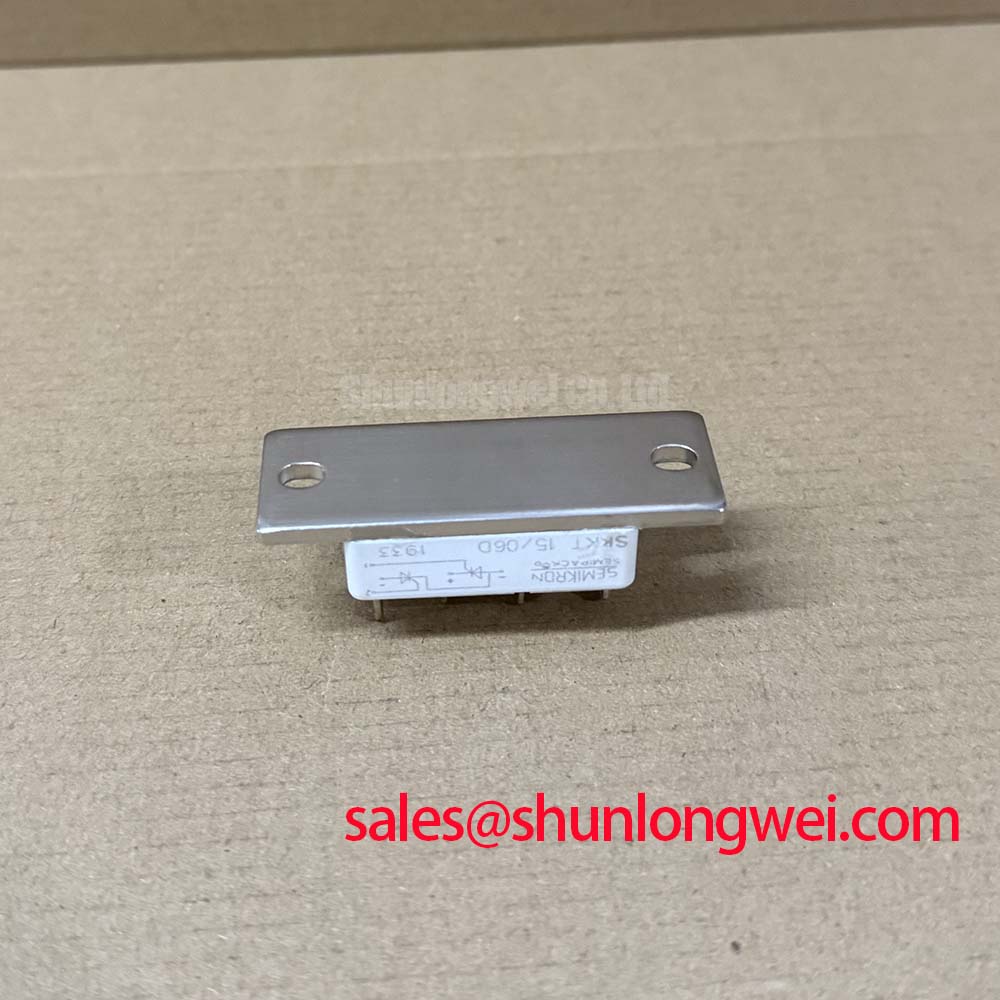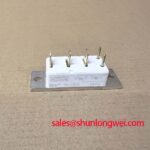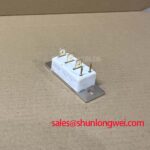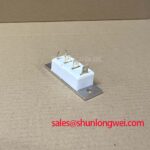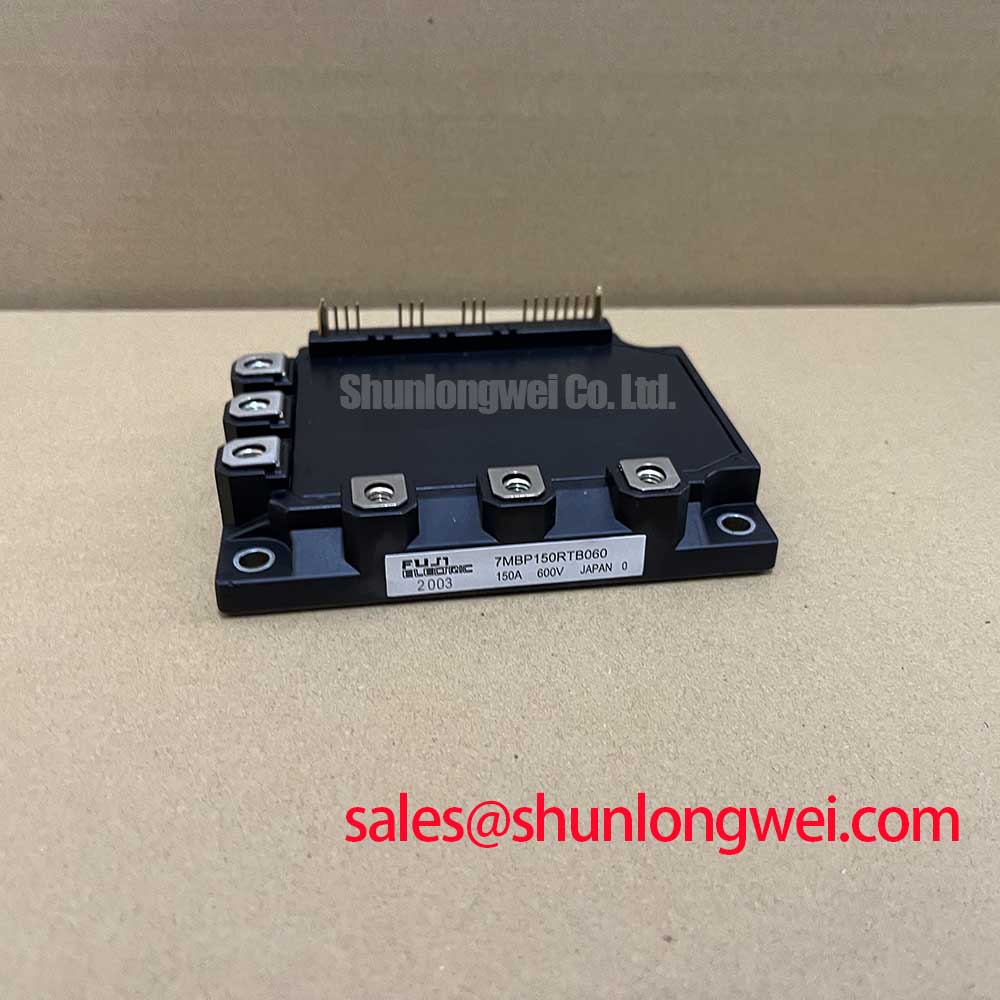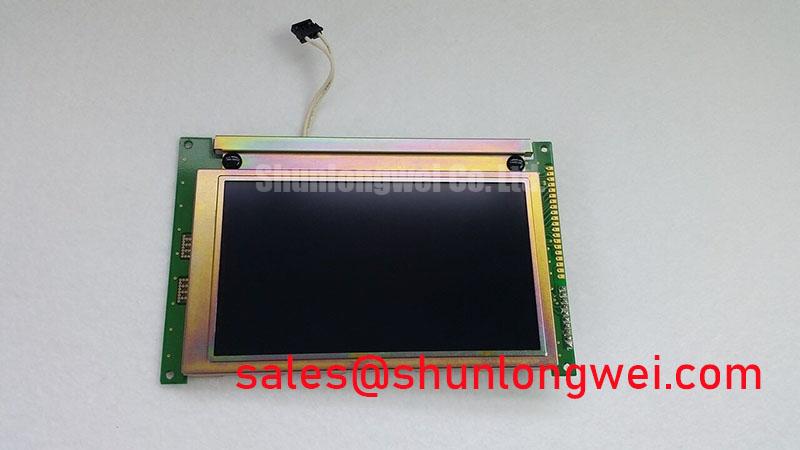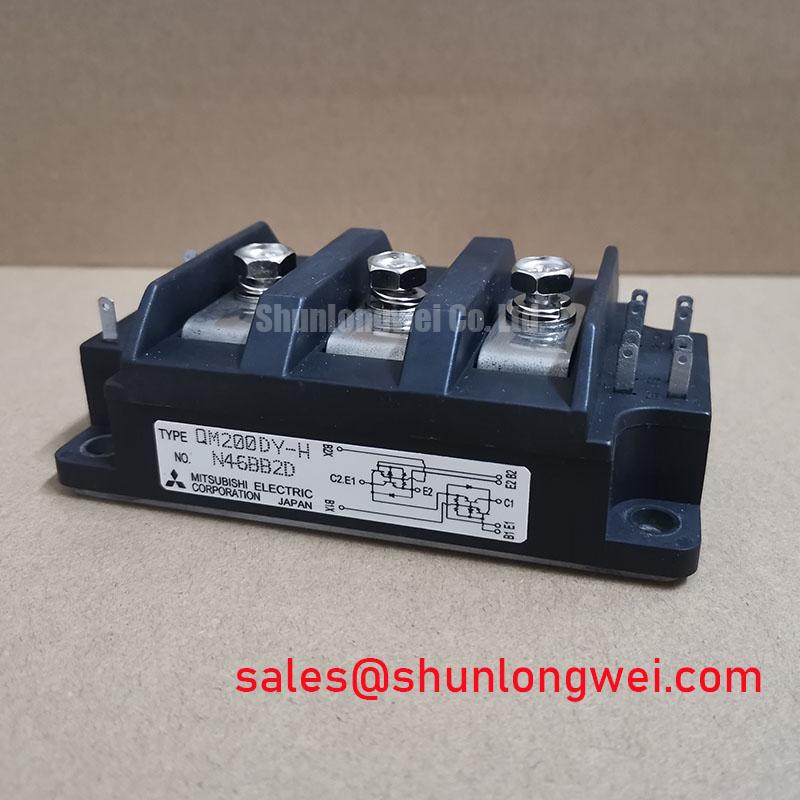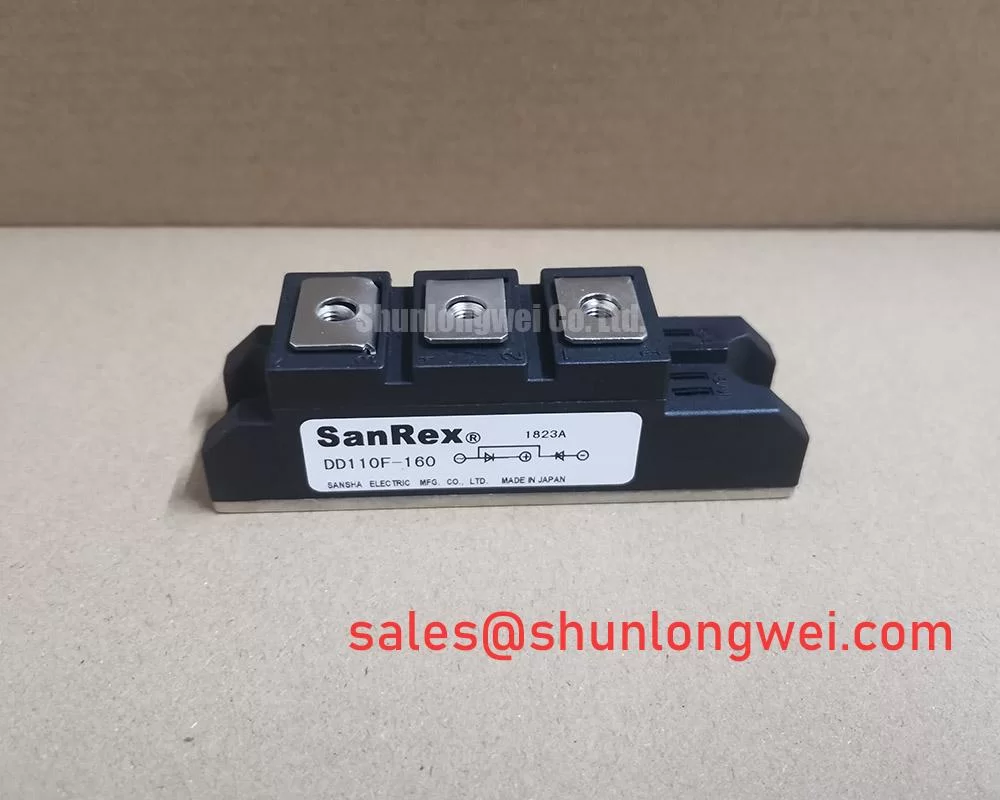SKKT 15/06D Thyristor Module: Fast-Track Your AC Control Design
The SKKT 15/06D Thyristor Module streamlines AC power control by integrating two thyristors into a single, isolated package. This component simplifies thermal management and accelerates assembly for compact industrial systems. With core specifications of 600V | 16A | V(TO) 0.85V, it delivers proven reliability and design efficiency. Key benefits include a reduced bill of materials and a simplified manufacturing process. This design directly addresses the engineering challenge of minimizing PCB footprint and assembly complexity in power control circuits by providing a pre-packaged, fully insulated solution, eliminating the need for external isolation materials.
Deployment Focus: Realizing Compact Designs with the SKKT 15/06D
In a typical soft starter application for a small AC motor, engineers often face the challenge of fitting power and control circuitry into a confined DIN rail enclosure. Using discrete thyristors would necessitate complex wiring, multiple insulating pads, and careful thermal planning to prevent short circuits and manage heat. By implementing the SEMIKRON SKKT 15/06D, a design team was able to replace multiple components with a single module. Its integrated isolated baseplate allowed direct mounting to a shared heatsink without extra insulating hardware, significantly shrinking the power stage footprint and cutting assembly time. What is the primary benefit of its pressure-contact design? Enhanced long-term reliability by eliminating solder fatigue.
A Comparative Data Framework for AC Control Topologies
When evaluating solutions for AC power regulation, engineers must consider the trade-offs between discrete components and integrated modules. The choice impacts assembly complexity, thermal performance, and overall system size. The following table provides a factual comparison to support an informed design decision, highlighting how the SKKT 15/06D's characteristics fit within this context.
| Design Parameter | Discrete Thyristor Solution (Two devices) | SKKT 15/06D Module | Engineering Implication |
|---|---|---|---|
| Thermal Interface | Requires separate insulating pads for each device | Single, integrated DCB isolated baseplate | The module simplifies heatsink design and reduces thermal stack-up resistance. |
| Assembly Process | Multiple mounting, wiring, and insulation steps | Single component mounting with screw terminals | Significantly reduces manual labor and potential for wiring errors. |
| Required Footprint | Larger due to component spacing and wiring | Compact SEMITOP 1 package | Enables higher power density in space-constrained applications. |
| Component Sourcing | Multiple part numbers to manage and stock | Single part number | Streamlines procurement and inventory management. |
For systems where rapid assembly and a compact form factor are paramount, the SKKT 15/06D module presents a clear advantage over building an equivalent circuit from individual components.
Strategic Advantages in System Assembly and Time-to-Market
The trend towards modularity in industrial automation places a premium on components that shorten the design-to-production lifecycle. The SKKT 15/06D directly supports this objective. Its design philosophy is centered on removing common obstacles in power circuit assembly. The use of a standard SEMITOP package with an electrically isolated baseplate is a prime example. This feature is analogous to a pre-fabricated building component; it eliminates the on-site work of measuring, cutting, and fitting insulation, which in the electronics world translates to reduced manual labor and fewer potential points of failure. This integration allows engineering teams to focus on system-level logic and control, rather than the minutiae of power stage layout and insulation, ultimately accelerating project completion and reducing manufacturing costs. For designers of industrial lighting controls or heating elements, this component enables the development of more compact and reliable final products.
Target Applications: Where Integration Drives Value
The SKKT 15/06D is engineered for AC power control applications where design simplicity, reliability, and a compact footprint are critical design criteria. Its characteristics make it a strong candidate for a range of industrial and commercial systems.
- AC Soft Starters: The module provides a robust solution for controlling the starting torque of small to medium-sized AC motors, preventing mechanical shock and electrical inrush currents.
- Industrial Dimmers & Lighting Control: In theatrical and architectural lighting, the module's phase-angle control capability enables precise and efficient dimming of high-power incandescent or tungsten loads.
- Temperature Control Systems: For industrial ovens, plastic molding machines, and HVAC systems, it serves as a reliable AC switch for resistive heating elements, enabling precise temperature regulation.
- AC Static Switches: The device can be used to build solid-state relays for switching AC loads, offering a long-lifetime alternative to mechanical contactors.
Due to its 16A average current rating and 600V blocking voltage, this thyristor module is the optimal choice for single-phase AC line applications up to 240VAC where streamlined assembly is a key project goal.
Inside the Module: Engineering for Simplified Implementation
The technical foundation of the SEMIKRON SKKT 15/06D is built on features that directly contribute to easier system integration. The core of the module's value lies not just in its electrical specifications, but in its physical construction which simplifies the engineering process.
Isolated Copper Baseplate
The module features an electrically isolated baseplate, providing 2500V of insulation. This completely removes the need for separate, often fragile, insulating thermal pads (like mica or silicone) between the module and the heatsink. This simplification reduces the Bill of Materials (BOM), minimizes assembly steps, and creates a more reliable and consistent thermal pathway for heat dissipation. What does a glass passivated chip offer? It ensures stable blocking voltage characteristics over the product's lifetime.
Hard Solder Joints
The internal construction utilizes hard soldering, a technique that provides superior resistance to thermal fatigue compared to standard soft solders. This mechanical robustness ensures a long operational life, particularly in applications that experience frequent temperature fluctuations, such as heating controls or motor starters. Understanding the principles of preventing thermal failures is key to leveraging this feature for maximum reliability.
Key Specifications for System Designers
The following parameters are essential for integrating the SKKT 15/06D into your power control system. These figures are derived from the official datasheet to facilitate accurate design and simulation.
| Parameter | Value |
|---|---|
| Repetitive Peak Off-State Voltage (VDRM/VRRM) | 600 V |
| On-State Current (ITAV) @ Tcase=85°C | 16 A |
| Surge Current (ITSM) @ 10 ms, Tvj=25°C | 250 A |
| Threshold Voltage (VT(TO)) | 0.85 V |
| Thermal Resistance, Junction to Case (Rth(j-c)) per thyristor | 1.5 °C/W |
| Isolation Test Voltage (Visol) | 2500 V |
For complete electrical and thermal characteristics, please refer to the official SKKT 15/06D datasheet.
Frequently Asked Questions for the SKKT 15/06D
1. What makes the SEMITOP 1 package suitable for rapid development of compact industrial controls?
The SEMITOP 1 package integrates two thyristors into a single, low-profile housing with an isolated baseplate and screw terminals. This all-in-one design drastically reduces the need for external components like insulating foils and complex wiring harnesses, allowing engineers to create a more compact and quickly assembled power stage compared to using discrete devices.
2. How does the isolated baseplate affect heatsink selection and mounting torque?
The isolated baseplate allows the SKKT 15/06D to be mounted directly onto a grounded heatsink without any additional insulating layers. This simplifies heatsink selection as electrical isolation is already handled by the module. It is crucial to use the specified mounting torque from the datasheet to ensure a proper thermal interface; over-tightening can damage the ceramic substrate, while under-tightening will increase thermal resistance.
3. Can the two thyristors in the SKKT 15/06D be controlled independently?
Yes, the two thyristors are configured in a series connection with separate gate terminals (G1, K1 and G2, K2). This allows for independent control of each SCR, making the module suitable for single-phase AC phase control (bi-directional) applications or as two independent switches in certain DC circuits.
The strategic implementation of modules like the SKKT 15/06D is pivotal for organizations aiming to enhance manufacturing efficiency and accelerate innovation in the competitive industrial controls market. By abstracting lower-level hardware complexity, these components empower engineering teams to allocate more resources toward software development, system connectivity, and value-added features that define next-generation automation solutions. This approach not only reduces time-to-market but also fosters a more agile and responsive product development culture. For systems where higher power is needed, designers may also evaluate the SKKT27B16E which offers a higher current rating in a similar package family.

